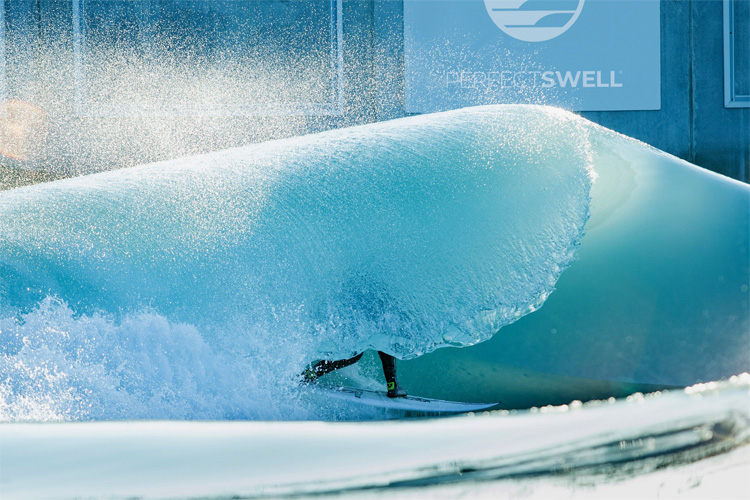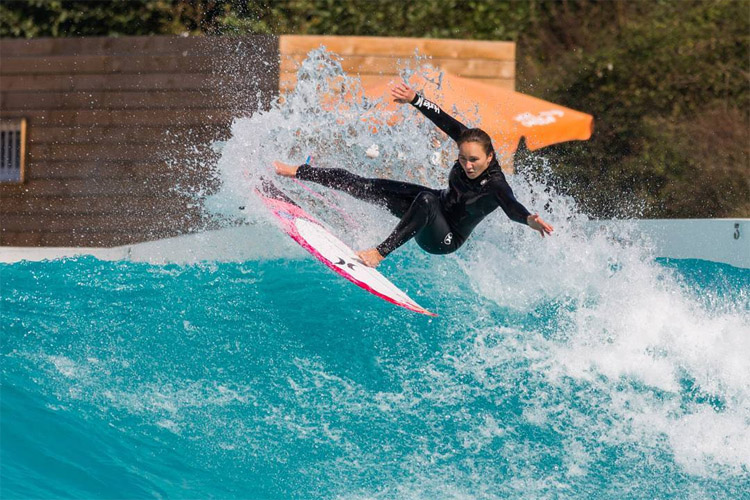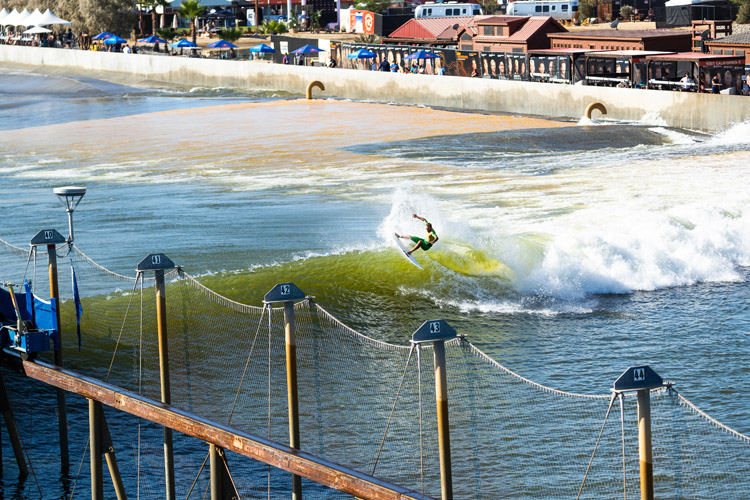Wave pools can be tricky to master.
Are you about to hit a wave pool for the first time in your surfing life? Are you anxious about not enjoying all the rides to the fullest?
Worry not. Artificial waves are a product of technology, but they're waves like those that peel down the line at our home break.
Nevertheless, despite being relatively predictable, man-made waves hide their inner secrets and should be approached with a slightly different mindset.
After all, each missed wave is a hit in your wallet.
And remember: freshwater is not seawater. You'll find it more difficult to float in wave pools because chlorine water is less dense than sea water.
1. Study the Wave
Observe where it starts to form, pay attention to the moment it begins to break and analyze the steepness of the wall as it evolves down the line.
Try to establish a few patterns in your mind so that when your turn comes, you'll know where to wait for the wave, when to paddle, and when to take off.
Watch how your fellow wave pool surfers take the most out of each ride and dissect their mistakes.
Browse a few online videos and make sure you've done your homework.

2. Check Out Wind Speed and Direction
In normal circumstances, in a surf pool, all waves are similar to one another.
They break into the same place and offer equal opportunities over and over again.
However, there's a variable that could change everything - the wind.
There's a huge difference between surfing artificial waves on an offshore, no wind, or onshore day.
So, you'll need to adapt on the fly, just like in the natural environment, i.e., the ocean.
The wind affects the lip, so adjustments are crucial.
3. Triangulate
Now that you've paddled out, you need to make sure you've chosen the right spot to wait for the artificial wave.
After selecting your ideal take-off zone, determine where you are for future memory use.
Look left, look right, behind you, and identify a few fixed structures that will help you know where to drop an anchor and wait for the upcoming opportunity.

4. Don't Take Too Many Risks
As with ocean waves and spots that you've never surfed, you've got to take it easy.
Avoid giving everything you have in your first rides. Take your time to get in sync with the rhythm of the basin.
Start your wave pool experience with a conservative approach and slowly evolve your style and ride until you understand the wave's formula.
5. Focus On Yourself, Forget Everyone Else
Wave pools are a relatively closed outdoor environment. It's not like being out in the ocean, surrounded by Nature and city buildings.
As a result, there will be more people watching or dissecting each wave. Ultimately, they'll observe each one of your rides and performance.
And that could exert unconscious pressure on your shoulders.
The trick is to let yourself go and enjoy the moment.
Relax and focus on the wave face that is in front of your eyes. Draw your lines smoothly and cherish each opportunity with a smile.
After all, you're paying to experience a unique form of wave riding.
